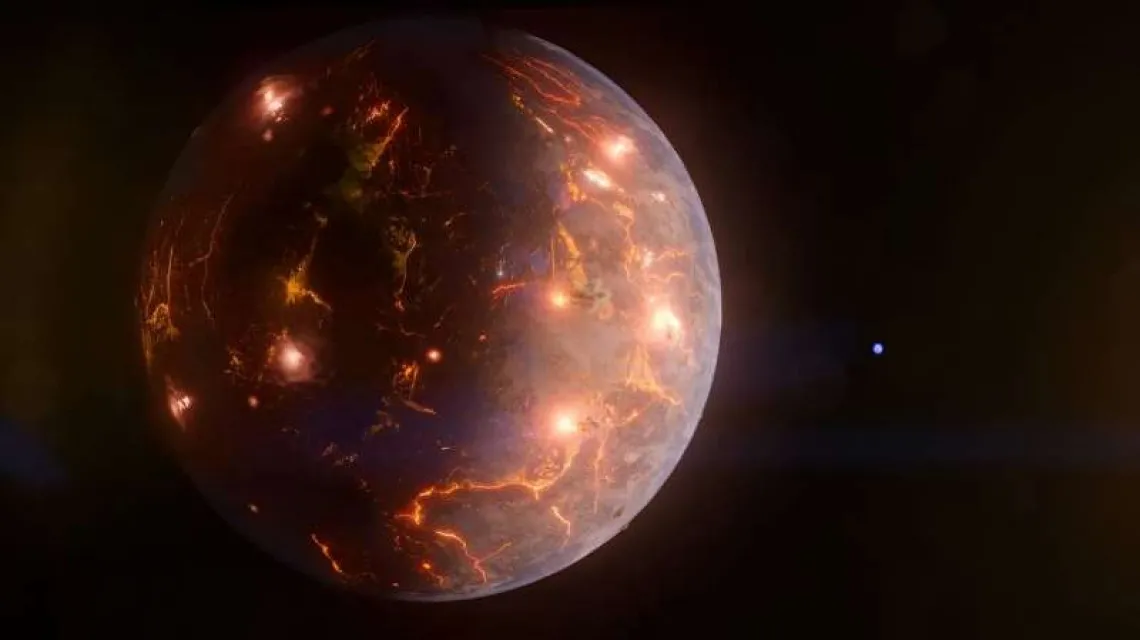Is It Life, or is It Volcanoes?

This artist's illustration shows an exoplanet with active volcanoes. But from a great distance we can't see the volcanoes, only the effect they have on the atmosphere, and that can muddy the waters when it comes to biosignatures.
Goddard Space Flight Center/Chris Smith (KRBwyle)
Astronomers are working hard to understand biosignatures and how they indicate life's presence on an exoplanet. But each planet we encounter is a unique puzzle. When it comes to planetary atmospheres, carbon is a big piece of the puzzle because it has a powerful effect on climate and biogeochemistry. If scientists can figure out how and where a planet's carbon comes from and how it behaves in the atmosphere, they've made progress in solving the puzzle.
But one of the problems with carbon in exoplanet atmospheres is that it can send mixed signals.
Carbon, in this context, means all of the major species of carbon, things like carbon dioxide, carbon monoxide, and methane (CO2, CO, and CH4.) A new study investigates the diversity of these chemicals in the atmospheres of exoplanets similar to Earth orbiting stars similar to the sun.
The study is particularly concerned with CO. "We focused on the conditions for the formation of a CO-rich atmosphere, which would be favorable for the origin of life," the authors write.
In Earth's present atmosphere, CO can't build up because chemical reactions destroy it. But in the deep past, 3 billion years ago, when the oceans were teeming with simple life, CO could've accumulated in Earth's atmosphere. It's because there was very little oxygen in the atmosphere, and the sun was dimmer.
So when we're searching for biosignatures, an atmosphere with CO could indicate simple life. That's because it can be an important source of both carbon and oxygen for life. But it's not that cut and dried. This study aims to untangle some of the details of exoplanet atmospheres so we can identify which mixtures of carbon molecules, including carbon monoxide, might be a biosignature.
